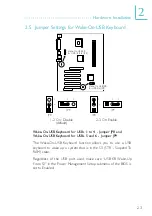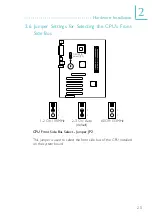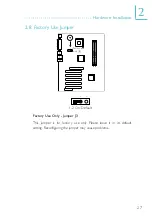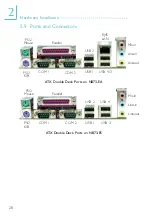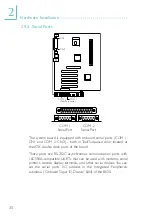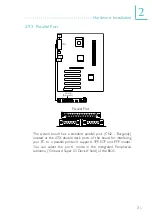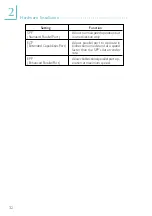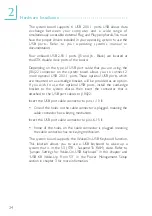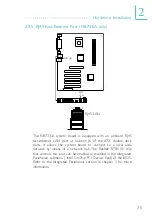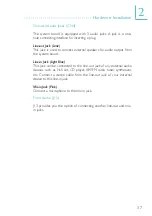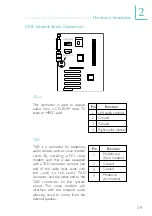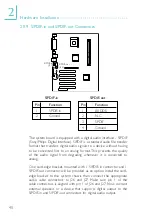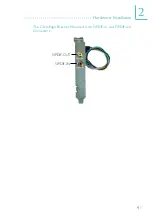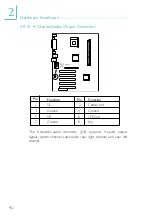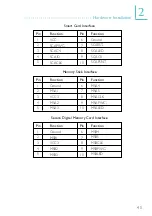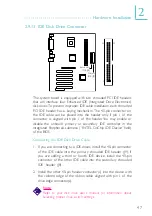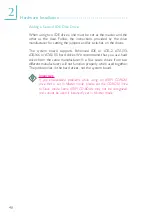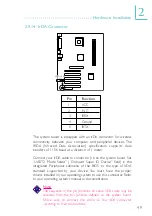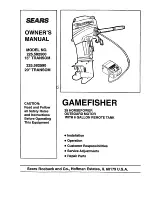
2
34
Hardware Installation
The system board supports 6 USB 2.0/1.1 ports. USB allows data
exchange between your computer and a wide range of
simultaneously accessible external Plug and Play peripherals. You must
have the proper drivers installed in your operating system to use the
USB por ts. Refer to your oper ating system’s manual or
documentation.
Four onboard USB 2.0/1.1 ports (J5 and J6 - Black) are located at
the ATX double deck ports of the board.
Depending on the type of USB port cable that you are using, the
J18/J22 connector on the system board allows you to connect 2
more optional USB 2.0/1.1 ports. These optional USB por ts, which
are mounted on a card-edge bracket, will be provided as an option.
If you wish to use the optional USB ports, install the card-edge
bracket to the system chassis then insert the connector that is
attached to the USB por t cables to J18/J22.
Insert the USB por t cable connector to pins 1-10 if:
• One of the holes on the cable connector is plugged, meaning the
cable connector has a keying mechanism.
Insert the USB por t cable connector to pins 6-15 if:
• None of the holes on the cable connector is plugged, meaning
the cable connector has no keying mechanism.
The system board suppor ts the Wake-On-USB Keyboard function.
This function allows you to use a USB keyboard to wake up a
system that is in the S3 (STR - Suspend To RAM) state. Refer to
“Jumper Settings for Wake-On-USB Keyboard” in this chapter and
“USB KB Wake-Up From S3” in the Power Management Setup
section in chapter 3 for more information.




